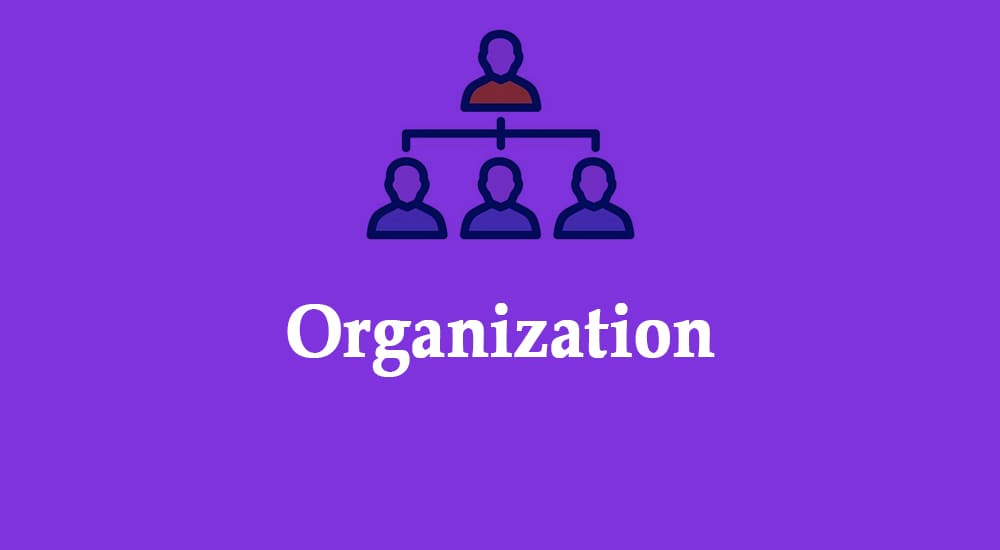Definition: An organization is a group of people who come together to achieve a shared objective. It consists of a hierarchical structure, dividing work among employees and aligning tasks with the organization’s goal.
Organization can be in any form; it can be formal or informal. People organize to achieve short-term temporary goals, which can turn into a permanent structure.
Purpose of an Organization
An organization has a mission, vision, values, and priorities.
Mission: This is when a group of people works towards a common purpose. Depending on the organization’s structure, this can be formal or informal, but there must be one.
Vision: A vision inspires people and motivates them to achieve the mission, the image of success.
Values: An organization’s values dictate how they will achieve their goal. It guides people working in a group.
Priorities: These are essential matters that guide organizational activities. Priorities are dynamic and change according to the situation. An organization’s priorities must support its mission, vision, and values.
Types of Organization Structures
- Organic Organization
- Functional Organization
- Multi-Divisional Organization
- Matrix Organization
- Project-Oriented (Composite or Hybrid) Organization
- Virtual Organization (Network Structure)
- Hybrid Organization
- PMO (Project Management Office)
#1. Organic Organizational Structure
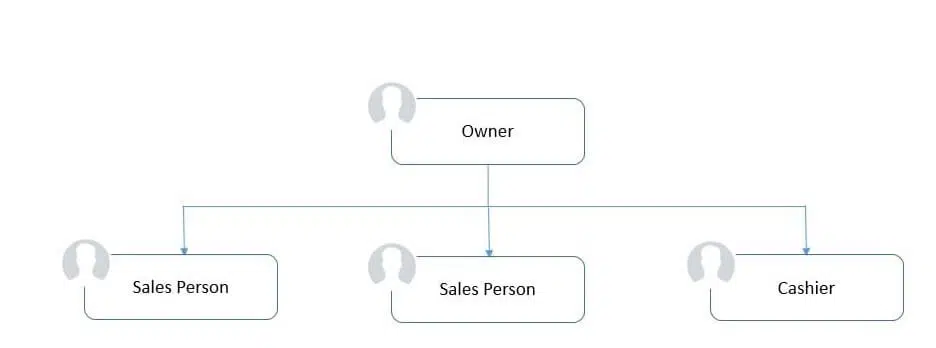
The organic structure is the simplest form, where a single owner works alone and works side by side with staff.
This structure has one or two employees.
Examples include freelancers, solopreneurs, and OPCs (One-Person Company).
#2. Functional Organizational Structure
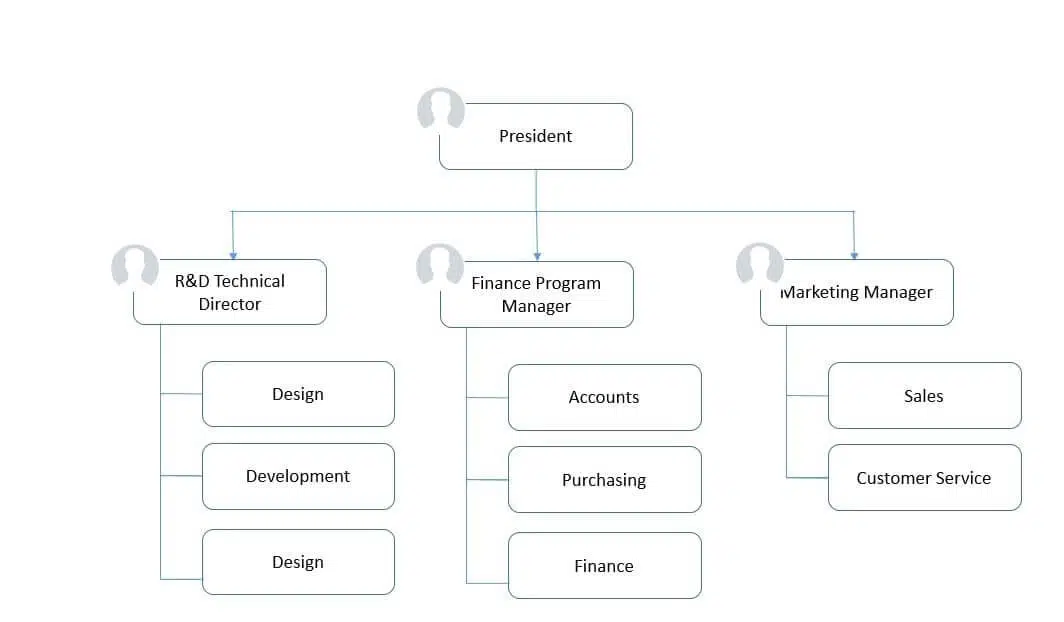
These consist of different departments with workers who have similar skills: finance, sales, marketing, and the like. This grouping lets organizations achieve high efficiency under each functional group.
#3. Multi-Divisional Organizational Structure
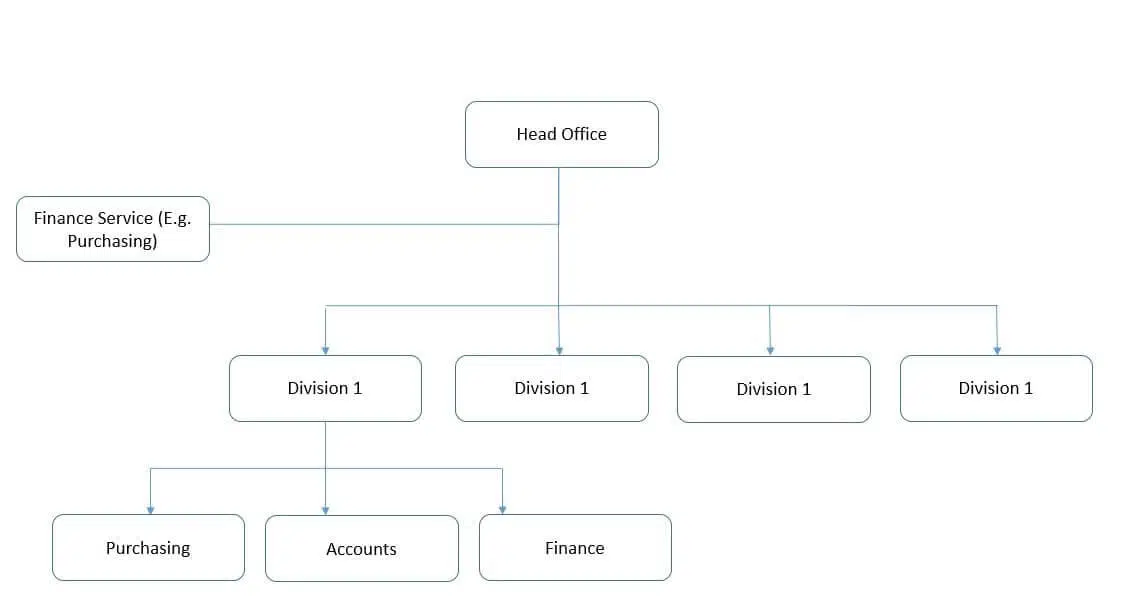
This structure has several independent functional divisions with a bit of centralization. Project managers have part-time staff and less authority.
All divisions have employees with diverse skills-based similar products and services. Each division has the resources required to work independently.
#4. Matrix Organizational Structure
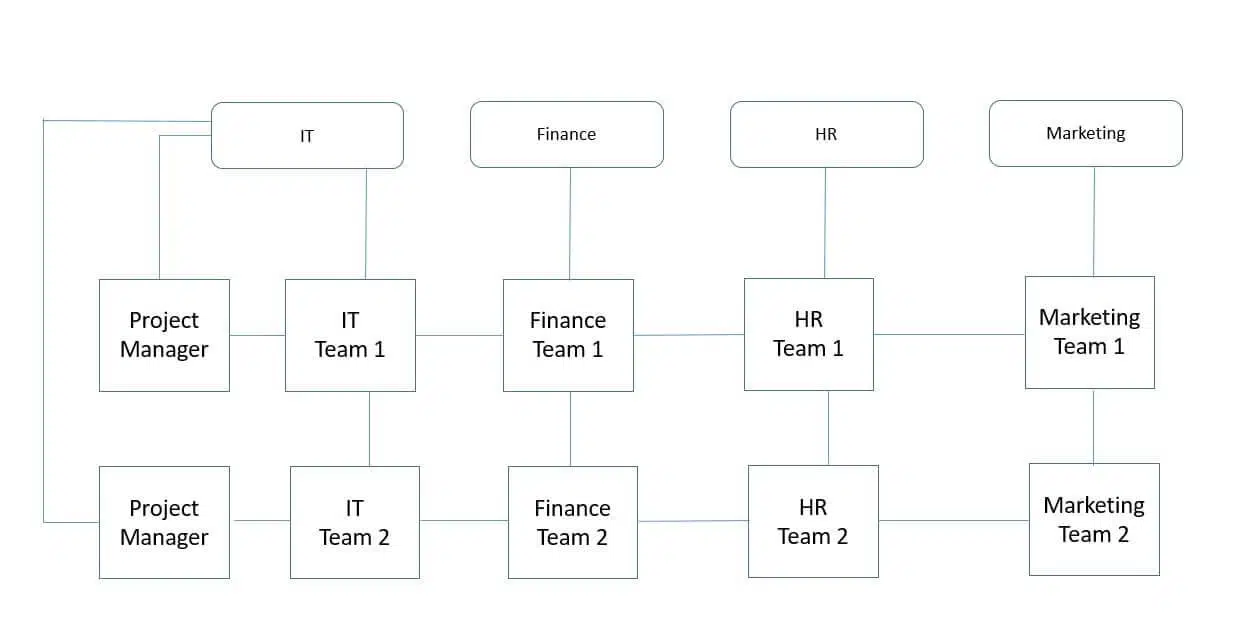
A matrix organization is a hybrid of the functional and projectized structures with two command systems: vertical and horizontal. Employees can be shared with a functional group and a project. This structure has the best of both worlds.
The matrix structure is the most popular for organizations.
You can divide it into three types:
- Strong Matrix Structure
- Balanced Matrix Structure
- Weak Matrix Structure
(I) Strong Matrix Structure
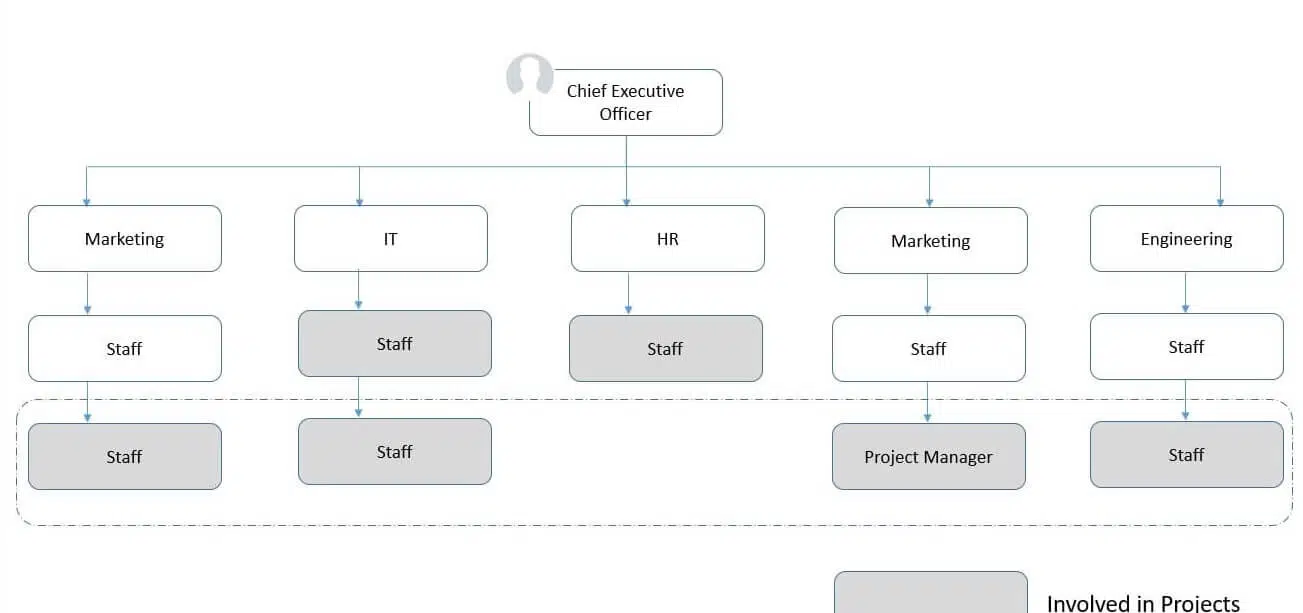
This is closest to a projectized organization. Here, project managers have the highest authority, and they control resources.
(II) Balanced Matrix Structure
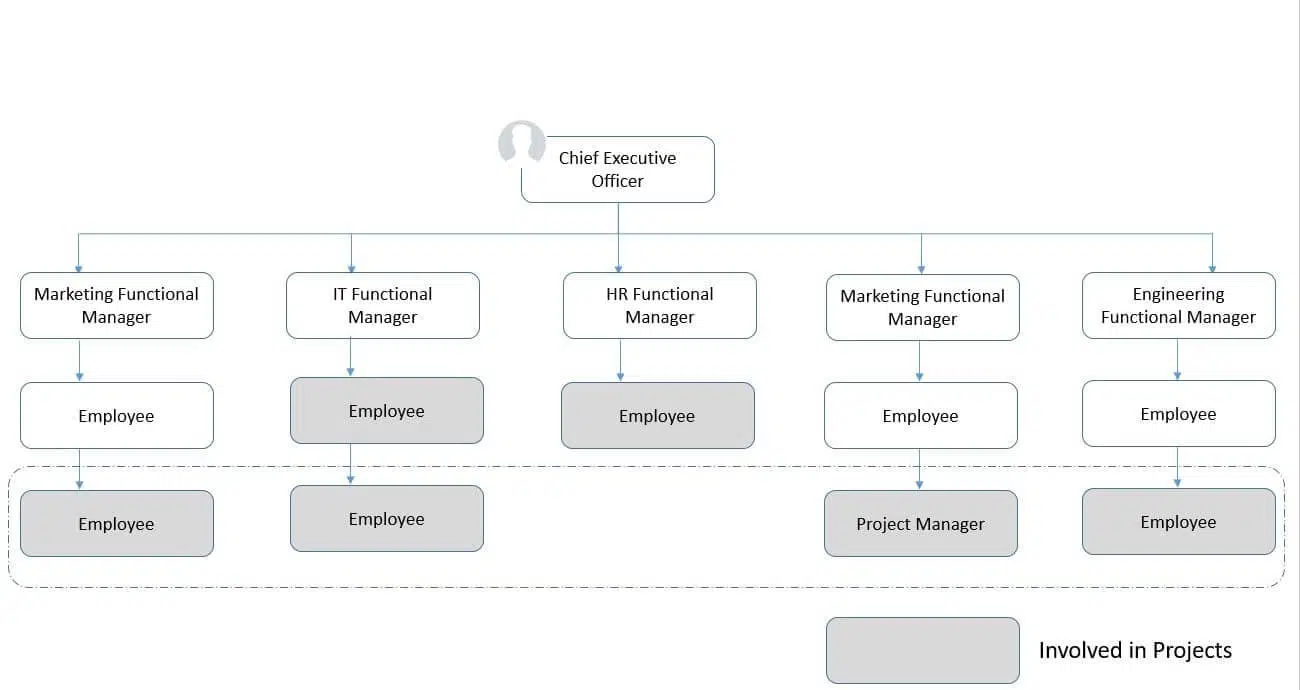
This structure is a balance of the functional and projectized organization. Project managers and functional managers share the resource and have equal authority.
(III) Weak Matrix Structure
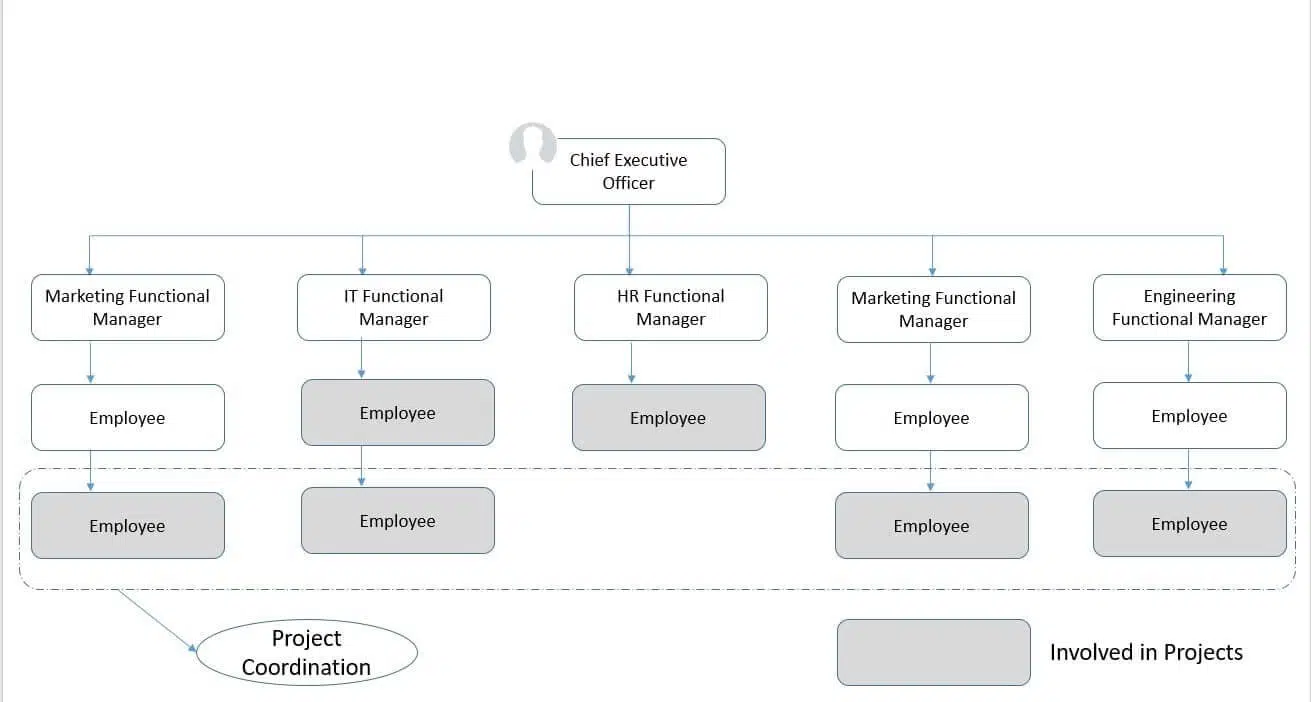
A weak matrix is most like a functional organization’s characteristics. Here, the project manager has the least authority, while the functional manager has full authority and controls resources.
#5. Project-Oriented (Composite or Hybrid) Organizational Structure
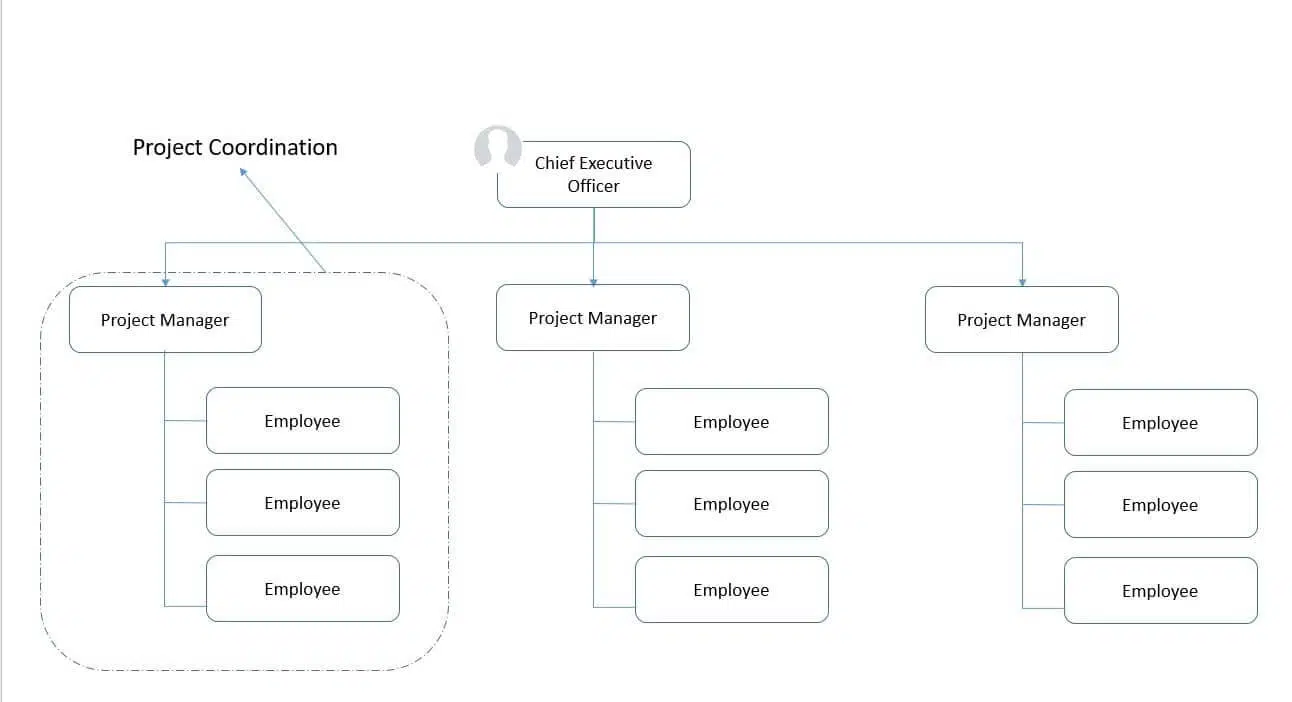
Projectized organizations deal only with projects. The project manager has a full role, complete authority, and controls all resources.
Small to medium-sized organizations that deal with projects have this structure.
#6. Virtual Organization or Network Structure
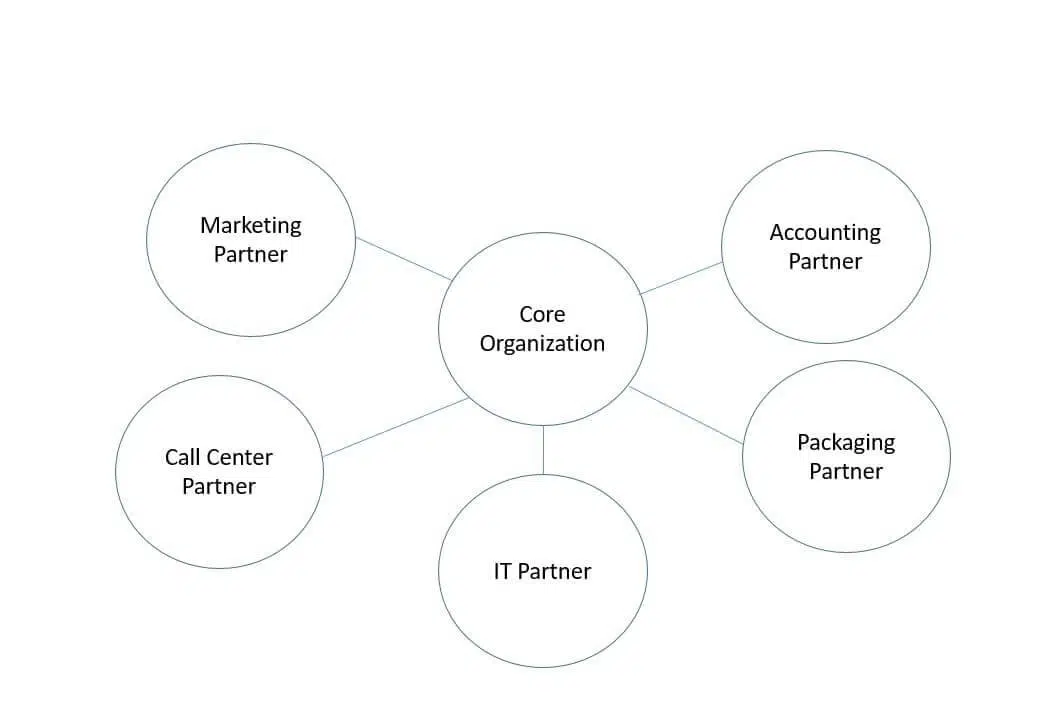
This structure helps achieve corporate growth and a greater profit. The organization manages its core business and outsources the rest via the internet.
Project managers have low-to-moderate authority and mixed control over resources.
#7. Hybrid Organizational Structure
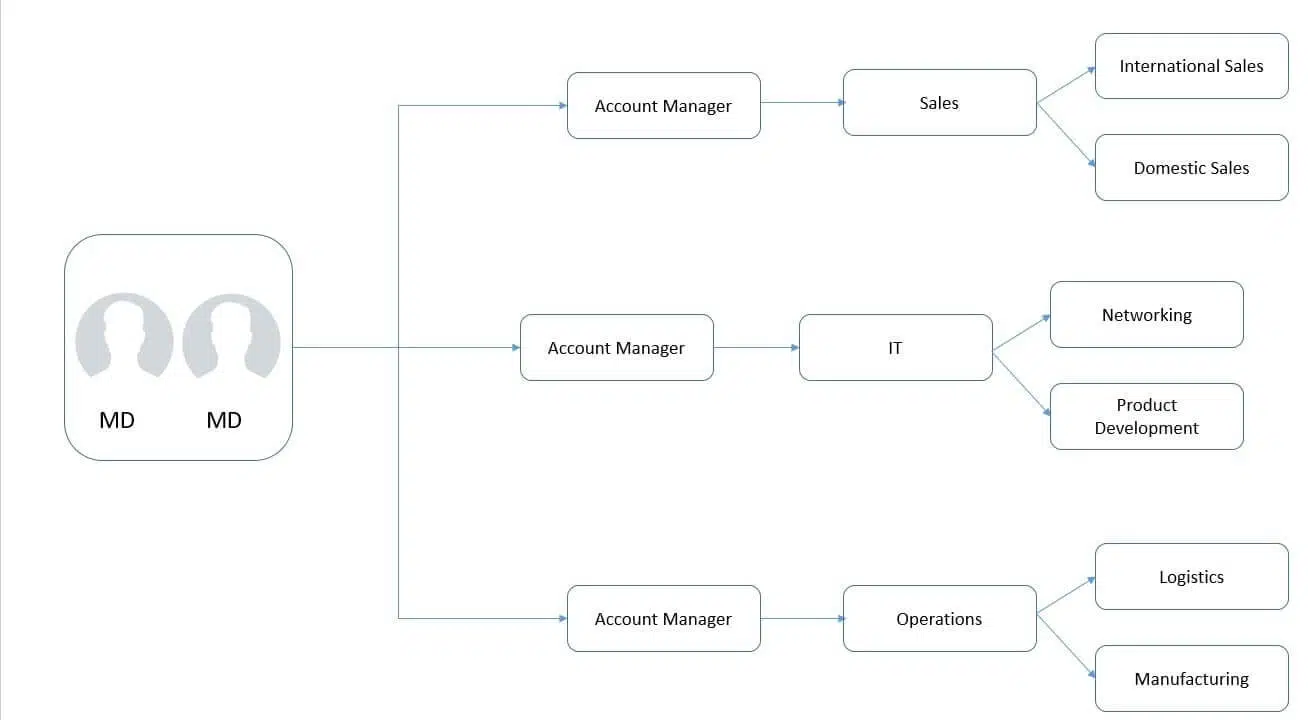
A hybrid can have any combination of organizational structures.
This is meant for an organization with diverse needs. Each person’s responsibility, authority, and resource control depend on the situation.
#8. PMO (Project Management Office)
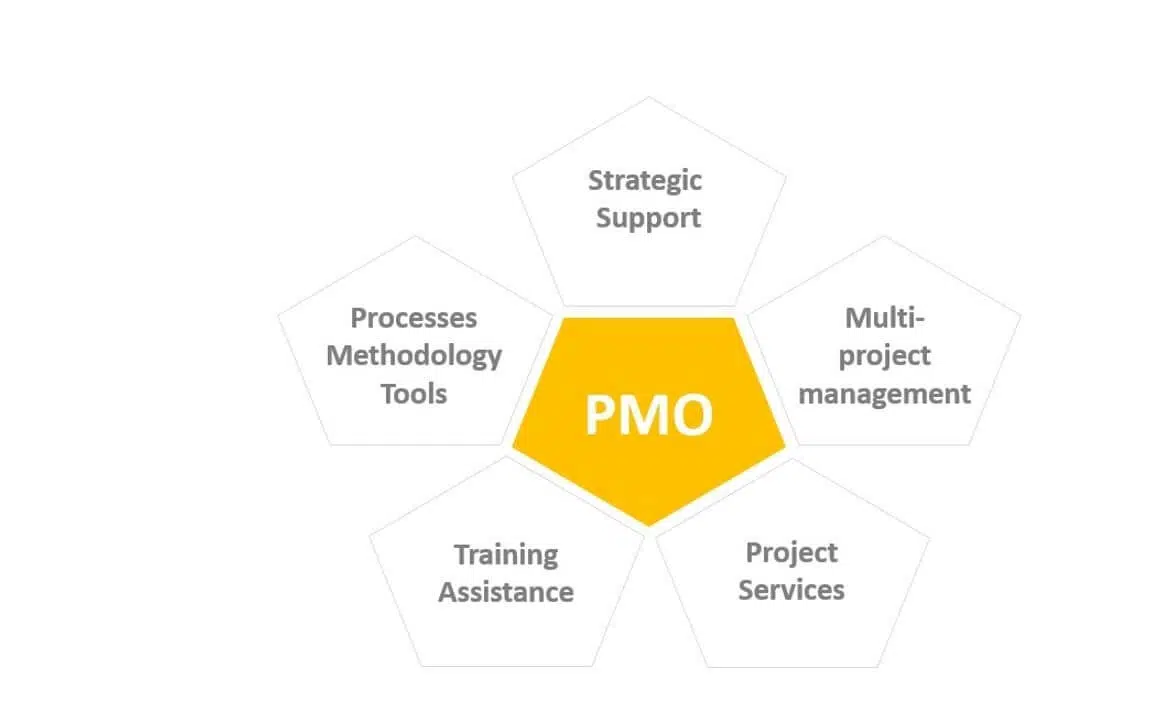
This is a mixed type of structure where the project managers have full authority and control resources.
Summary
An organization is a group of people who work together to achieve their shared goal. The structure chosen should support the organization’s mission, values, and vision while guiding their priorities.
